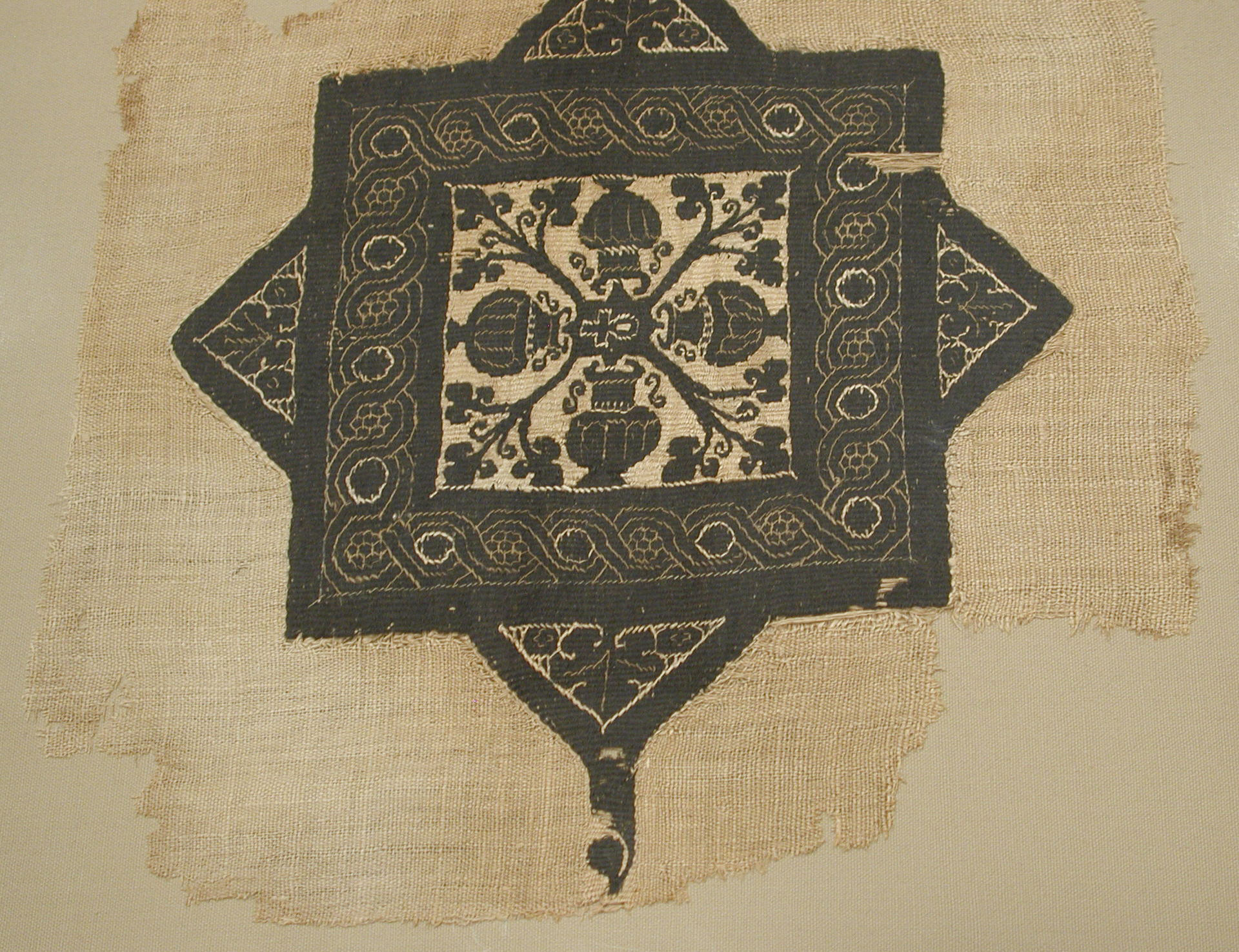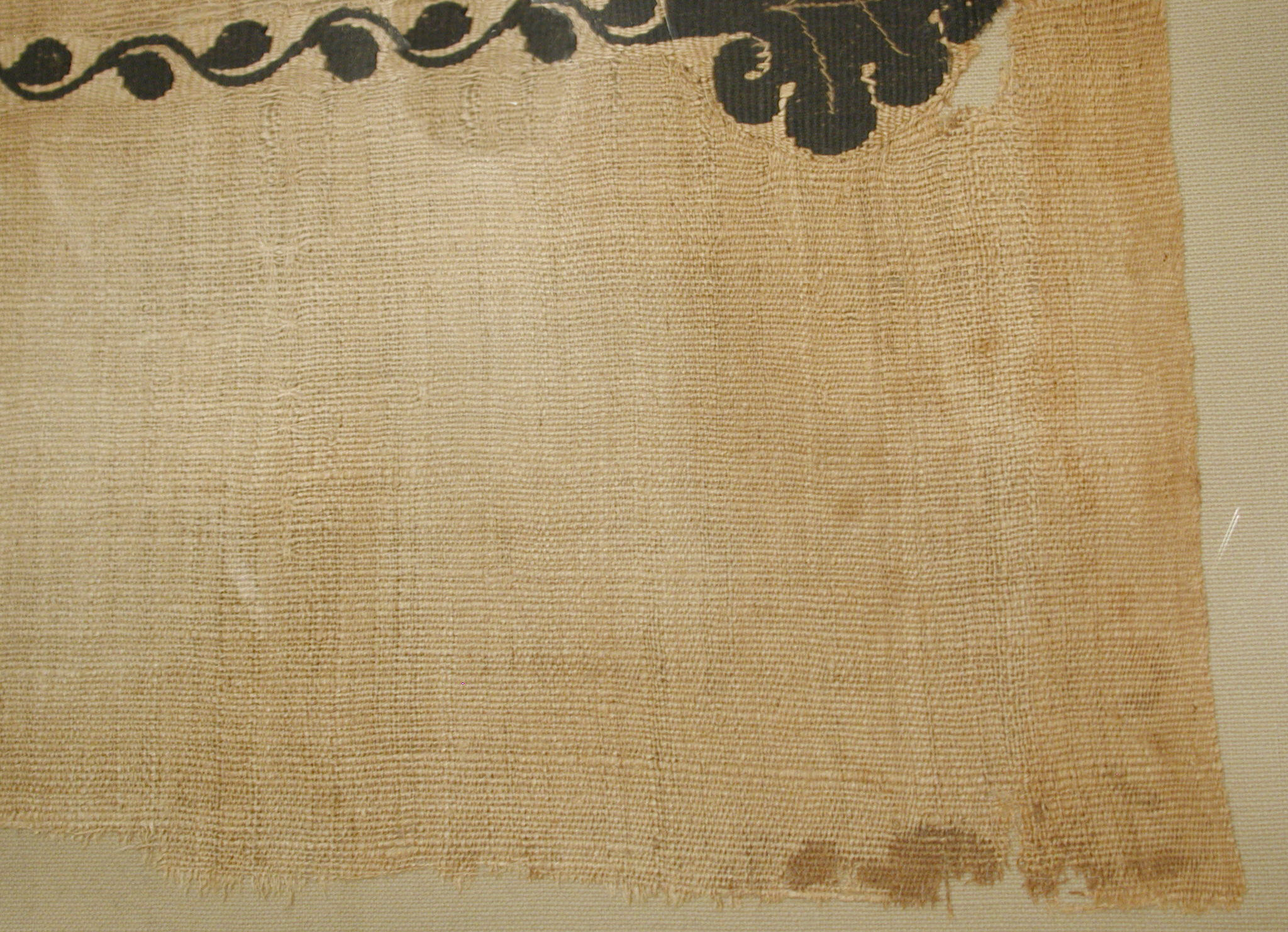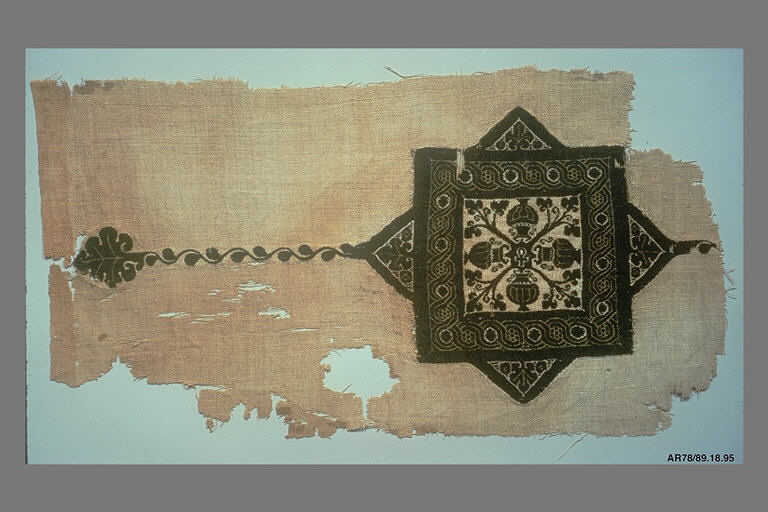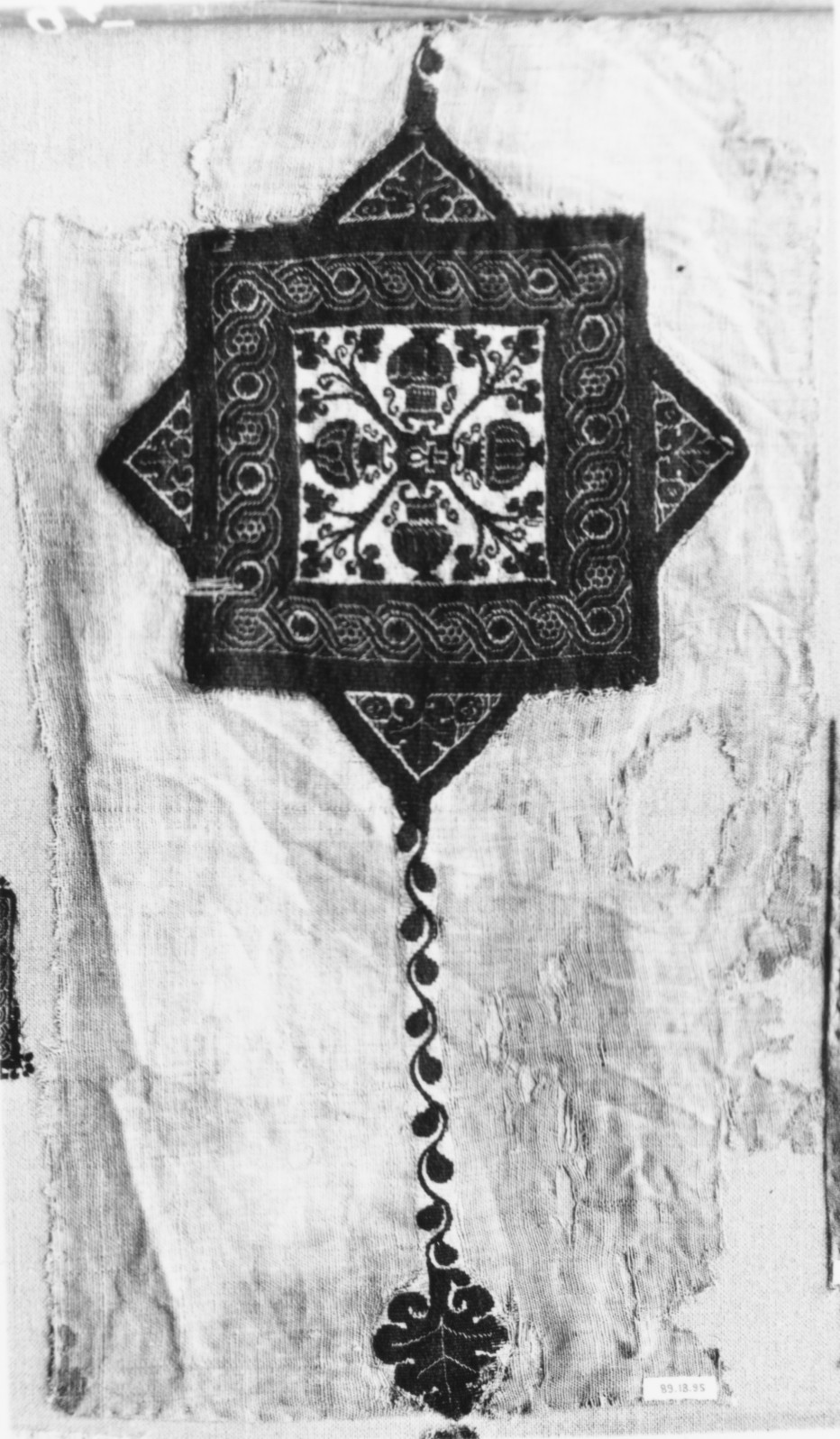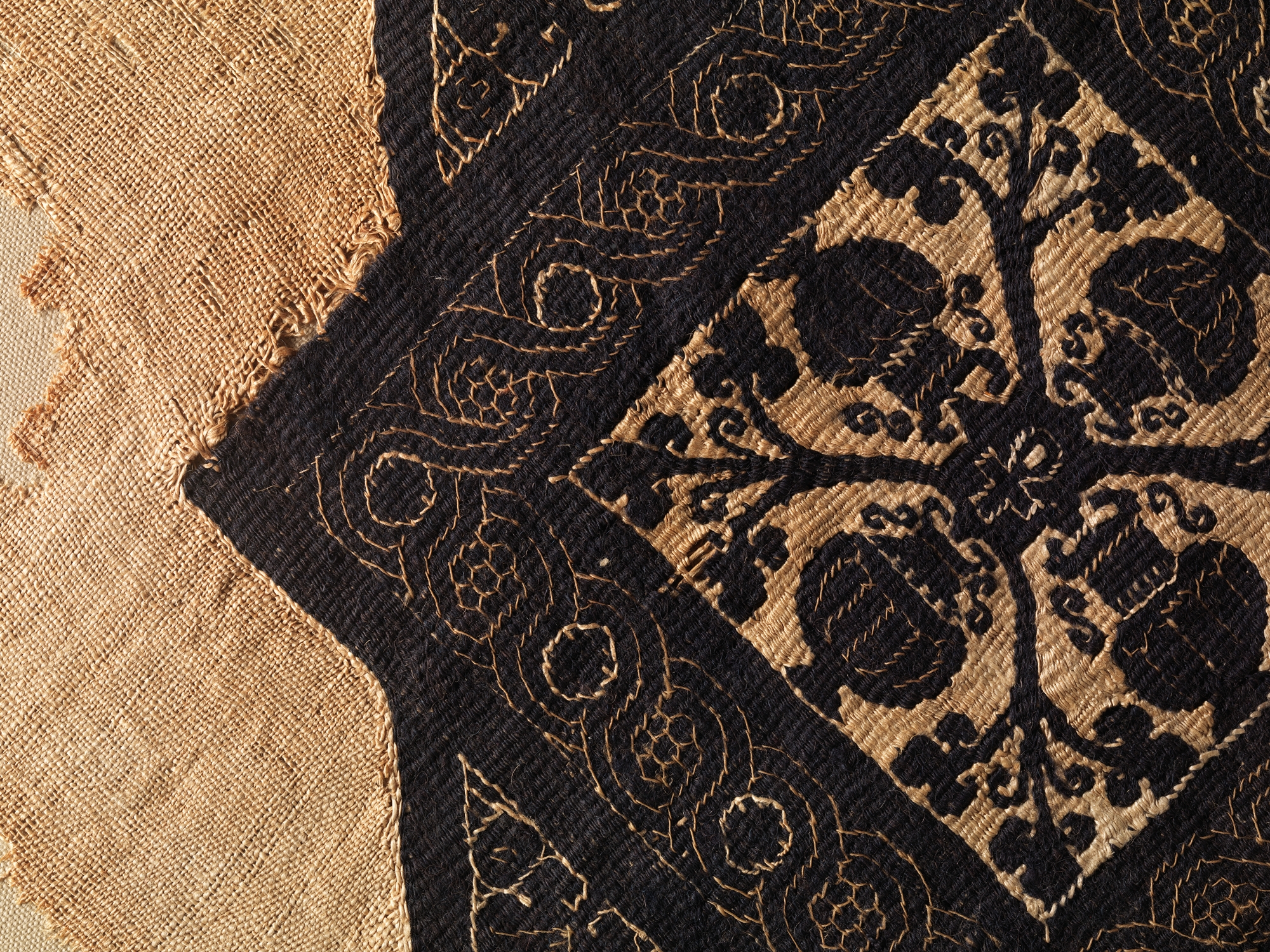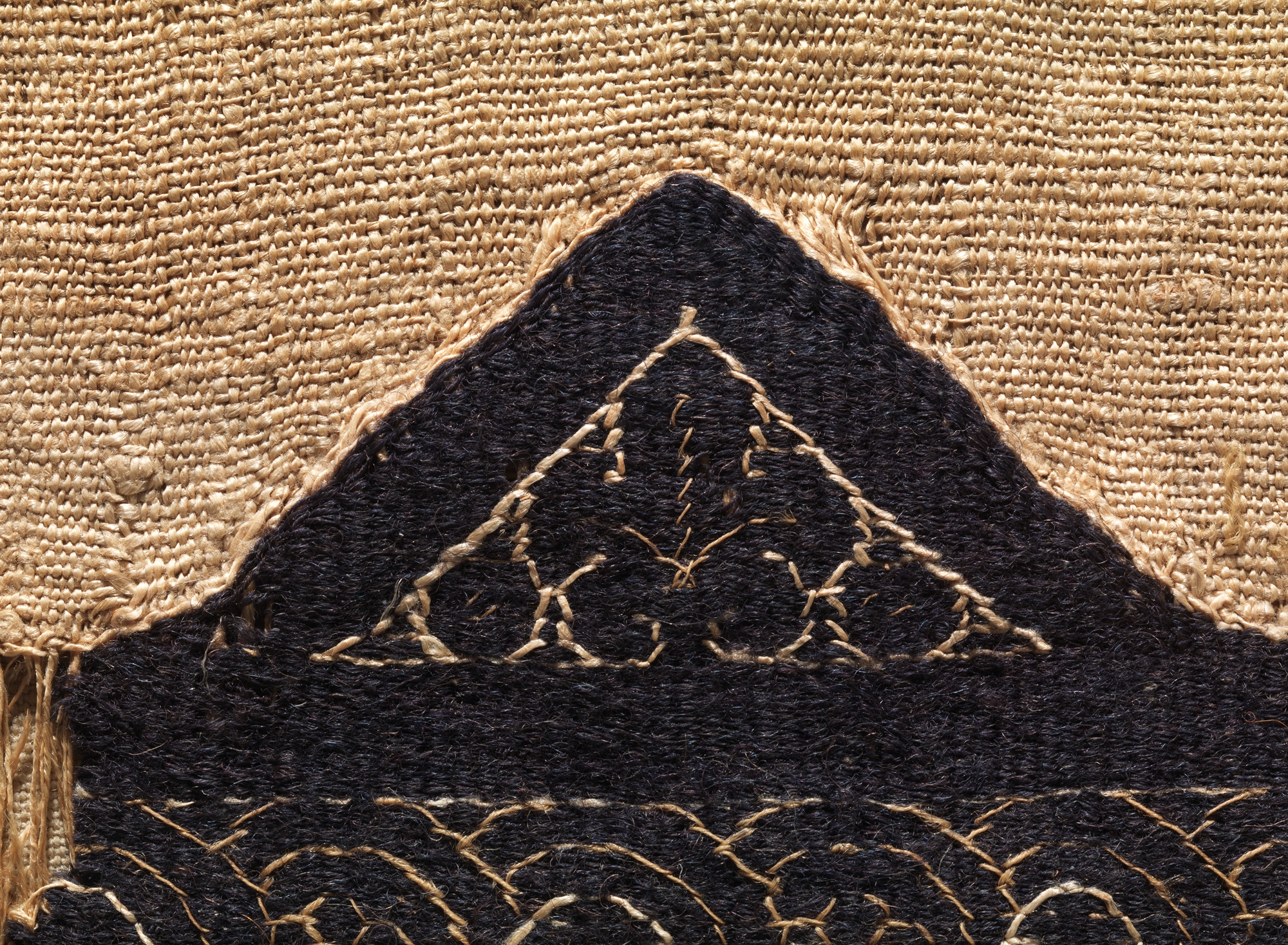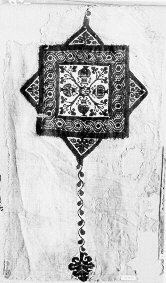Coptic Textile Fragment
Not on view
Textiles like this one are thought to have been produced by Copts (Christian Egyptians) and other weavers throughout the Byzantine Empire. The designs and motifs of Coptic and Byzantine textiles influenced the visual repertoire of the early Islamic period. This fragment was probably part of the shoulder decoration of a tunic, the quintessential garment of the Late Antique world. The people of late antiquity were also buried in these garments, and most surviving examples have been found in cemeteries. This example contains a large eight-pointed star formed by overlaid squares filled with sprouting urns, vine scrolls, and geometric interlaces— motifs also seen in Byzantine floor mosaics.
Due to rights restrictions, this image cannot be enlarged, viewed at full screen, or downloaded.
This artwork is meant to be viewed from right to left. Scroll left to view more.


